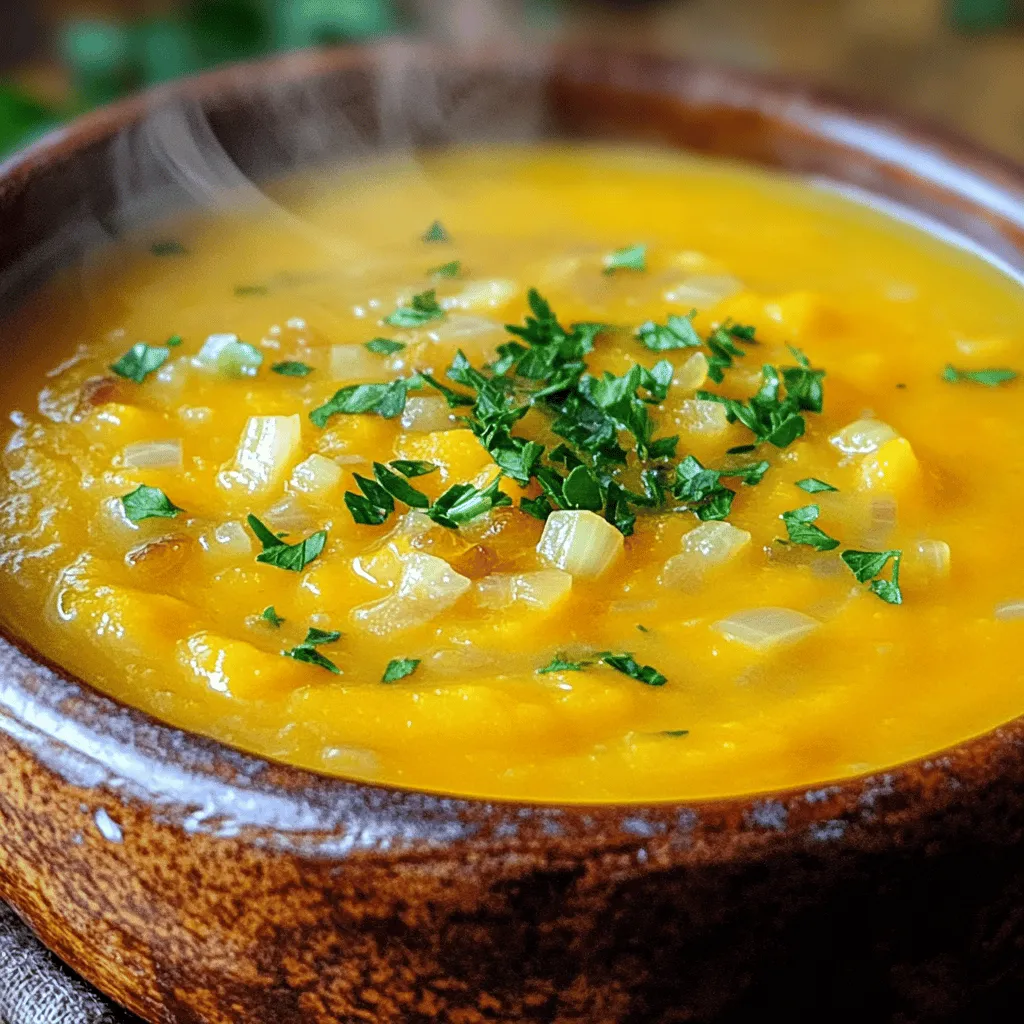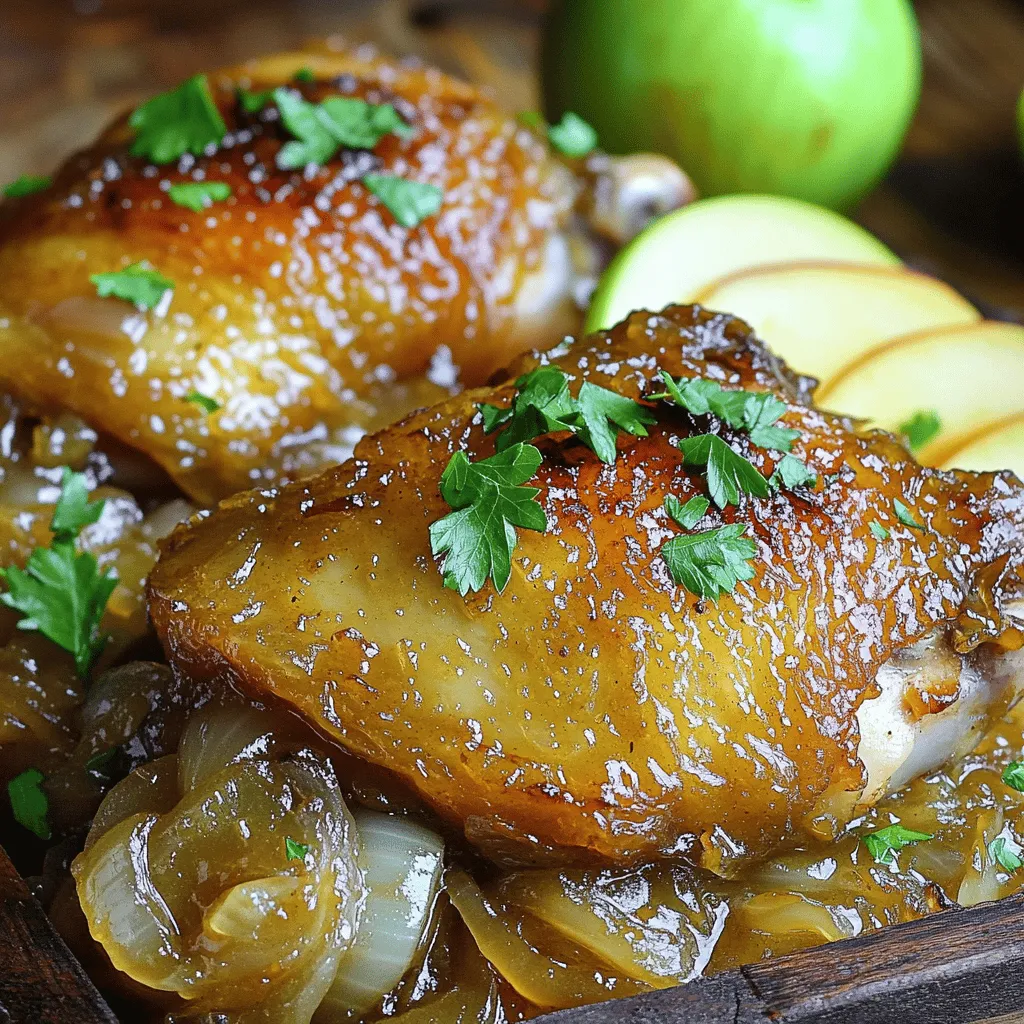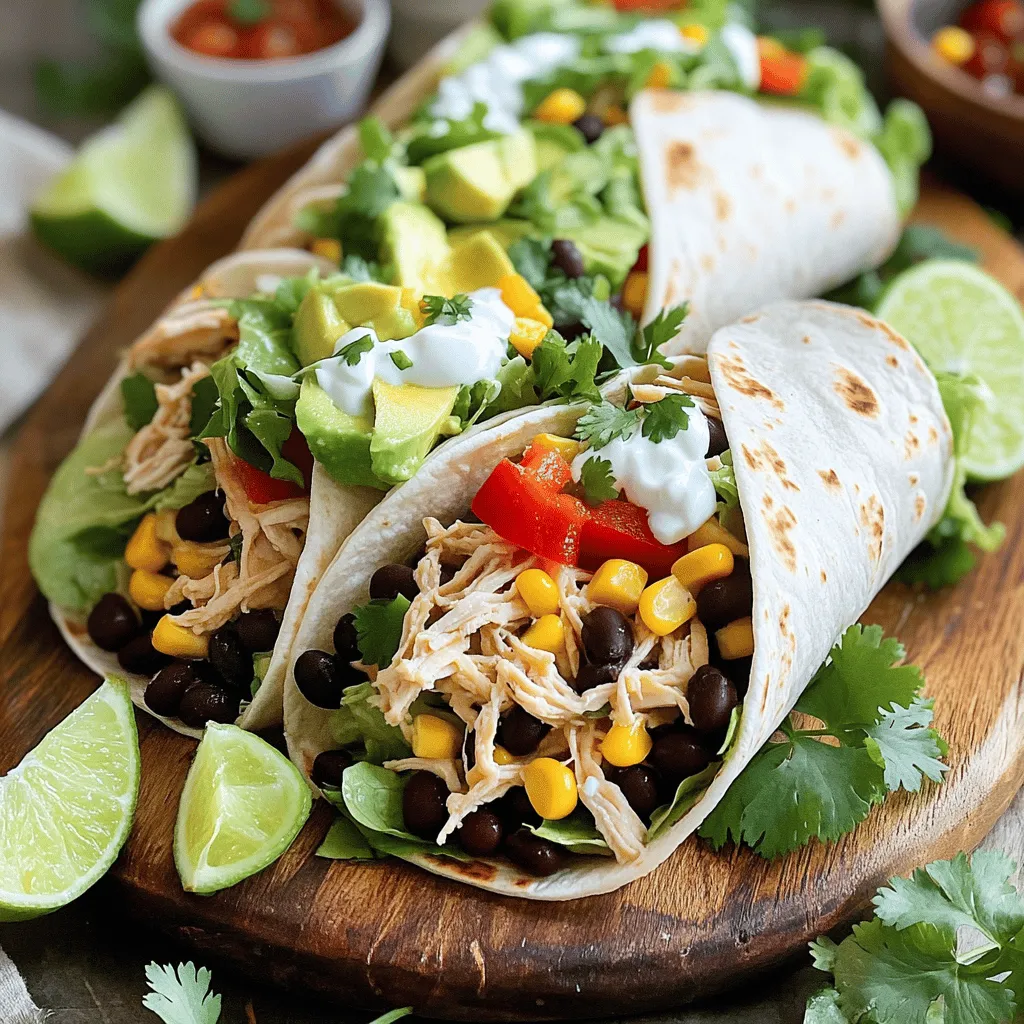Dinner

Butternut Squash Soup Creamy and Flavorful Delight
Looking for a warm and tasty dish? You’re in the right place! Butternut squash soup is creamy, delicious, and super simple to make. I’ll guide
![To make the cranberry orange breakfast cake, you'll need these key ingredients: - 1 ½ cups all-purpose flour - 1 teaspoon baking powder - ½ teaspoon baking soda - ¼ teaspoon salt - ½ cup unsalted butter, softened - ¾ cup granulated sugar - 2 large eggs - 2 teaspoons vanilla extract - Zest of 1 large orange - ½ cup fresh cranberries, chopped - ½ cup orange juice - 1 teaspoon ground cinnamon - ½ cup powdered sugar (for glaze) - 1-2 tablespoons orange juice (for glaze) These ingredients work together to create a moist and flavorful cake. The tartness of the cranberries pairs perfectly with the sweet orange flavor. If you don't have some ingredients, here are some easy swaps: - Use whole wheat flour instead of all-purpose flour for added fiber. - Swap in coconut oil for unsalted butter to make it dairy-free. - Replace granulated sugar with brown sugar for a richer taste. - Use lemon juice and zest instead of orange for a different citrus flavor. - You can use dried cranberries if fresh ones aren't available, just chop them smaller. These substitutions can help you adapt the recipe to your kitchen needs. To bake this cake, you will need a few essential tools: - An 8-inch round cake pan - Mixing bowls (one large, one medium) - A whisk for mixing dry ingredients - A hand mixer or stand mixer to cream the butter and sugar - A rubber spatula for folding in the cranberries - A wire rack for cooling the cake Having the right tools makes the process smoother and more enjoyable. Each tool plays a role in helping you create the perfect cake. For the full recipe, check out the detailed instructions. First, I gather all my ingredients. This makes cooking easier and more fun. You’ll need flour, baking powder, baking soda, salt, butter, sugar, eggs, vanilla, orange zest, cranberries, orange juice, and cinnamon. 1. Preheat your oven to 350°F (175°C). This step is key for a good bake. 2. Grease and flour an 8-inch round cake pan. You can also line it with parchment paper. This helps the cake come out easily. Next, I mix the dry ingredients. 1. In a medium bowl, whisk together the flour, baking powder, baking soda, salt, and cinnamon. Set this aside. 2. In a large bowl, cream the softened butter and sugar. Mix for about 2-3 minutes until it’s light and fluffy. Then, it’s time to add the eggs. 1. Add the eggs one at a time. Mix well after each egg. 2. Now, add the vanilla extract and orange zest. Mix until everything is well combined. Now, we combine the wet and dry mixes. 1. Gradually add the dry mix to the wet mix. Alternate with the orange juice. Start and end with the dry mix. This keeps the batter smooth. 2. Gently fold in the chopped cranberries. You want them evenly spread throughout the batter. Next, pour the batter into your prepared cake pan. 1. Smooth the top with a spatula. 2. Bake the cake for 25-30 minutes. To check if it's done, insert a toothpick into the center. If it comes out clean, the cake is ready. Once baked, let the cake cool. 1. Allow it to cool in the pan for about 10 minutes. 2. After that, transfer it to a wire rack to cool completely. While the cake cools, I prepare the glaze. 1. In a bowl, whisk together the powdered sugar and orange juice. Mix until you reach a smooth and drizzling consistency. 2. Once the cake is cool, drizzle the glaze over the top. Let it flow down the sides for a beautiful look. And there you have it! A lovely Cranberry Orange Breakfast Cake that's both tasty and easy. For the full recipe, check the details above. To get the best texture for your Cranberry Orange Breakfast Cake, focus on mixing. Cream the butter and sugar until they are light and fluffy. This step adds air and helps the cake rise. When adding the dry and wet ingredients, mix just until combined. Over-mixing will lead to a dense cake, which is not what we want. If you want a moister cake, try using fresh cranberries instead of frozen ones. They hold more moisture. To boost the flavor of your cake, use fresh orange zest. The zest gives a bright, citrusy kick that blends well with cranberries. Adding a pinch of ground cinnamon also enhances the overall taste. You can even try a splash of almond extract for a nutty undertone. If you want a sweeter glaze, add more powdered sugar. It creates a nice contrast with the tart cranberries. Sometimes, cakes can sink in the middle. To fix this, make sure your oven is at the right temperature. An oven thermometer can help. If your cake is too dry, it may be overbaked. Always check for doneness with a toothpick. If it comes out clean, the cake is ready. For uneven baking, rotate the cake halfway through baking. This helps it cook evenly. If the glaze is too thick, add a bit more orange juice until it flows easily. For the full recipe, check the details above! {{image_2}} You can change the fruit in this cake to suit your taste. If you want to try something new, consider using blueberries or raspberries. These fruits add a nice touch. You can even mix different fruits together for a fruity burst. Just keep the amount of fruit similar to the cranberries in the Full Recipe. Making this cake gluten-free is easy. Just swap regular flour for a gluten-free blend. Look for one that works well in cakes. For a vegan version, replace the eggs with flaxseed meal or applesauce. Use a plant-based butter instead of regular butter. These changes keep the cake tasty while meeting dietary needs. You can boost the flavor of this cake in many ways. Adding spices like nutmeg or ginger gives it a warm touch. A dash of almond extract can also add depth. Try mixing in some chopped nuts for crunch. Each of these options can create a new twist on the original recipe. Experiment with what you like best! After baking your cake, let it cool in the pan for about 10 minutes. This helps the cake set. Then, transfer it to a wire rack. Let it cool completely. Cooling prevents sogginess. It also helps keep the cake from breaking. Once your cake is cool, wrap it well. Use plastic wrap or foil. This helps keep the cake fresh. Store it at room temperature for up to three days. If you want to keep it longer, freeze it. Wrap it tightly in plastic wrap and then in foil. It can stay in the freezer for up to three months. To reheat your cake, preheat the oven to 350°F (175°C). Remove the plastic wrap and foil. Place the cake in the oven for about 10-15 minutes. This warms it up without drying out. You can also microwave a slice for about 20-30 seconds. If the cake seems dry, add a little glaze or orange juice. This adds moisture and flavor. For the best taste, enjoy it fresh from the oven. For the full recipe, check out the recipe section. To prevent your cake from sinking, make sure to measure ingredients accurately. Use leveled cups for flour and sugar. Mix the batter just until combined; avoid overmixing. Ensure your oven is at the right temperature before baking. Finally, check that your baking powder and soda are fresh. These steps help your cake rise evenly and stay fluffy. Yes, you can use frozen cranberries in this recipe. Frozen cranberries work well and save time. Just chop them slightly before adding to the batter. You don’t need to thaw them, but be aware that the cake may take a few extra minutes to bake. Using frozen berries keeps the cake moist and delicious. Cranberry Orange Breakfast Cake pairs well with many delightful options. Here are some ideas: - A dollop of whipped cream - A scoop of vanilla ice cream - Fresh orange slices - A cup of hot coffee or tea These pairings enhance the flavors and make for a lovely breakfast or snack. Enjoy your cake with these treats for an extra special touch! For the full recipe, visit the [Full Recipe] section. This blog post covered key ingredients, step-by-step instructions, and useful tips. You learned how to choose the right baking tools and enhance flavors. We also explored variations for different diets and fruit options. Proper cooling and storage methods keep your cake fresh longer. Remember, baking is a fun journey. Don’t hesitate to experiment and make it your own. Enjoy every slice of your Cranberry Orange Breakfast Cake, and share it with friends and family for smiles all around. Happy baking!](https://toastedrecipes.com/wp-content/uploads/2025/07/65d24886-18cc-45f8-a551-94c32ab468e3.webp)
Cranberry Orange Breakfast Cake Tasty and Easy Recipe
Are you ready to delight your taste buds with a Cranberry Orange Breakfast Cake? This tasty and easy recipe will brighten your mornings with its

Creamy Italian Polenta with Parmesan Delight Recipe
If you’re looking for a warm, comforting dish, creamy Italian polenta is the answer. This rich and silky comfort food pairs perfectly with Parmesan cheese
![- Chicken thighs - Apple cider - Onions - Olive oil - Garlic - Fresh thyme - Paprika - Salt and pepper - Fresh parsley For this cider braised chicken, I choose bone-in, skin-on chicken thighs. They stay juicy and tender during cooking. The apple cider adds sweetness and depth. Fresh onions caramelize to a rich, golden brown. Olive oil gives a nice base for cooking. Garlic brings a wonderful aroma to the dish. Fresh thyme adds an earthy note. Paprika gives warmth and color. Salt and pepper enhance all the flavors. When you gather your ingredients, focus on quality. Use fresh herbs and good cider for the best taste. Each component plays a key role in making this dish shine. You can find the full recipe in the article. Enjoy the process, and let the flavors develop! To start, heat 2 tablespoons of olive oil in a large pot over medium heat. Season the chicken thighs with salt, pepper, and paprika. Place them skin-side down in the pot. Sear for about 5 to 7 minutes until the skin turns golden brown and crispy. Remember to flip the chicken and cook for another 3 to 4 minutes. Remove the chicken and set it aside. This step locks in flavor and gives you that nice crunch. Next, add the sliced onions to the same pot. If needed, add the last tablespoon of olive oil. Keep the heat low and sprinkle a pinch of salt. Cook the onions for about 15 to 20 minutes. Stir often. Look for them to turn soft and deep golden brown. This slow cooking is key to bringing out their natural sweetness. Once the onions are caramelized, it’s time to add garlic and thyme. Add the minced garlic and fresh thyme to the pot. Cook for about 1 to 2 minutes. This adds a lovely aroma and depth to the dish. Make sure not to burn the garlic, as it can turn bitter. Now, pour in the apple cider. This is where the magic happens! Use a wooden spoon to scrape the bottom of the pot. This helps lift all those tasty browned bits. Bring the mixture to a gentle simmer. This will combine all the flavors nicely. Return the seared chicken thighs to the pot, skin-side up. Make sure they are mostly submerged in the cider and onion mix. Cover the pot and reduce the heat to low. Let it simmer for 30 to 35 minutes. This slow cooking makes the chicken tender and juicy. After braising, taste the sauce. Adjust the seasoning with more salt and pepper if needed. If you want a thicker sauce, remove the chicken and let the sauce reduce over medium heat for a few minutes. This gives you a rich, flavorful sauce. Finally, serve the chicken thighs topped with the caramelized onions. Spoon the sauce over the top. For presentation, plate the chicken on a rustic board. Garnish with fresh parsley for color. Pair it with crusty bread or mashed potatoes. Enjoy this delicious meal! For the complete recipe, check out the Full Recipe. To enhance your cider-braised chicken, consider these spices and seasonings: - Fresh thyme adds a lovely herb taste. - Paprika gives a warm, smoky hint. - Salt and pepper boost all flavors. I often add a pinch of cinnamon for warmth. The sweetness from the cider pairs well with it. Each spice brings out the best in your dish. Braising is key for this recipe. It cooks the chicken slowly in liquid. This method keeps the meat moist and tender. You might wonder why braising over baking. Baking can dry out the chicken quickly. Braising allows the chicken to absorb all the cider's flavor. It also helps the onions caramelize perfectly. A heavy-bottomed pot is a must for braising. It distributes heat evenly, preventing burning. I recommend using a Dutch oven for this dish. The tight lid helps trap steam and flavor. You also want a sturdy wooden spoon for stirring. It allows you to scrape the pot without scratching it. Each tool plays a role in making your dish a success. For the complete recipe, check out the [Full Recipe]. {{image_2}} You can add more vegetables to this dish. Carrots, parsnips, or potatoes work well. These veggies soak up the cider's flavor. You can roast them first for richer taste. Other herbs can also change the flavor. Try rosemary or sage for a warm twist. Fresh herbs add brightness to the dish. Using a mix can make your meal unique. If you want a slow cooker version, just follow a few steps. Sear the chicken first for flavor. Then, place everything in your slow cooker. Set it on low for 6 to 8 hours. The chicken will be tender and juicy. You can also braise in the oven. Preheat to 325°F. Use a Dutch oven, cover it, and cook for about 1 hour. This method gives you a nice, even heat. Side dishes can enhance your cider chicken. Mashed potatoes or rice soak up the sauce well. Roasted vegetables add color and nutrition. A crisp salad can balance the meal, too. For drinks, pair with a glass of cider. It complements the dish perfectly. You can also try a light white wine, like Sauvignon Blanc, for a refreshing taste. To keep your cider-braised chicken fresh, store it in a tight container. Place it in the fridge within two hours of cooking. This helps prevent bacteria growth. You can enjoy the chicken for up to four days when stored properly. If you want to keep it longer, freeze it. For freezing, wrap each piece tightly in plastic wrap, then place it in a freezer bag. This method stops freezer burn and keeps it tasty. You can freeze it for about three months. When you are ready to eat your leftovers, keep them juicy. The best method is to reheat on the stove. Place the chicken in a pan with a little cider or broth. Cover the pan with a lid. Heat it over low to medium heat until warm. This keeps your chicken moist and flavorful. You can also use the microwave, but be careful. Heat it in short bursts, checking often to avoid drying it out. Your cider-braised chicken can last up to four days in the fridge. If frozen, it can last around three months. Always check for signs of spoilage before eating. If the chicken smells off or has a slimy texture, throw it away. Trust your senses. Keeping your food safe is key to enjoying delicious meals. For more tips, check the Full Recipe for guidance. Yes, you can use chicken breasts. However, they cook faster than thighs. Chicken breasts may dry out if overcooked. Thighs have more fat and stay juicy. If using breasts, check for doneness after 20 minutes of simmering. This will help you keep them tender. You can use either hard or non-alcoholic cider. Hard cider adds depth and a slight tartness. Non-alcoholic cider is great for family meals. Both options work well in this recipe. Choose one that you enjoy drinking for the best flavor. To make this dish gluten-free, check all your ingredients. Use gluten-free chicken broth if needed. The ingredients listed are naturally gluten-free. Ensure your cider does not contain gluten. Many brands offer gluten-free options. Yes, you can prepare this dish in advance. Cook it fully and let it cool. Store in an airtight container in the fridge. Reheat on the stove or microwave when ready to serve. This dish tastes even better the next day as flavors meld. If you don’t have thyme, use rosemary or oregano. Both herbs add great flavor. You can also try sage for a different taste. Adjust the amount based on your preference. Fresh herbs usually have a stronger flavor than dried ones. This recipe teaches you how to create a tasty chicken dish using simple steps. We covered the key ingredients, the searing method, and the importance of flavors. You learned about cooking techniques, storage tips, and possible variations to try. Cooking can be fun and rewarding. With this recipe, you can impress your friends and family. Enjoy the process, get creative, and make this meal your own. Happy cooking!](https://toastedrecipes.com/wp-content/uploads/2025/07/90e1c497-8bd8-41d0-84c5-0b47ed2ae229.webp)
Cider Braised Chicken with Caramelized Onions Delight
Get ready to impress your taste buds with my Cider Braised Chicken with Caramelized Onions! This comforting dish blends tender chicken thighs with sweet cider
![- 2 cups cooked white beans (cannellini or navy beans) - 1 cup cremini mushrooms, sliced - 1 medium onion, diced - 2 cloves garlic, minced - 2 carrots, diced - 2 celery stalks, diced - 4 cups vegetable broth - 1 cup diced tomatoes (canned or fresh) - 1 teaspoon dried thyme - 1 teaspoon dried rosemary - 1 bay leaf - Salt and pepper to taste - 2 tablespoons olive oil - Fresh parsley, chopped for garnish When I make my cozy white bean mushroom stew, I love using simple yet fresh ingredients. First, I include white beans. These are great for protein and fiber. I often use cannellini or navy beans because they are creamy and smooth. Next, I add cremini mushrooms. They bring a rich, earthy flavor to the dish. Slicing them thin helps them cook evenly. I also use a medium onion. Dicing it small allows it to blend well and add sweetness to the base. Then come my extra ingredients. I always use garlic for its bold flavor. Two cloves are just right. Carrots and celery add color and crunch. Dicing them keeps the texture nice. For the broth, I prefer vegetable broth. It keeps the stew vegan and adds depth. I never forget the diced tomatoes, either. They add acidity and a juicy texture. When it comes to herbs, dried thyme and rosemary work wonders. They give the stew a warm, comforting aroma. I finish with a bay leaf for a hint of complexity. Finally, I season with salt and pepper to taste. Olive oil adds a nice richness, and I like to garnish with fresh parsley. It brightens the dish and adds a pop of color. For the full recipe, you can check out Cozy White Bean Mushroom Stew. Enjoy cooking! 1. In a large pot, heat 2 tablespoons of olive oil over medium heat. 2. Add 1 medium diced onion. Sauté it for about 5 minutes. The onion should become soft and clear. 3. Next, add 2 minced garlic cloves. Cook for about 1 minute until it smells nice. 1. Stir in 2 diced carrots and 2 diced celery stalks. Cook them for 4-5 minutes. They should start to soften. 2. Mix in 1 cup of sliced cremini mushrooms. Cook for another 5-7 minutes. The mushrooms will release their juices and become tender. 1. Add 2 cups of cooked white beans, 1 cup of diced tomatoes, and 4 cups of vegetable broth to the pot. 2. Sprinkle in 1 teaspoon of dried thyme, 1 teaspoon of dried rosemary, and 1 bay leaf. Mix well. 3. Bring the pot to a boil. Then reduce the heat to low and cover it. 1. Let the stew simmer for 20-25 minutes. This allows all the flavors to mix. 2. Remove the bay leaf. Season with salt and pepper to taste. 3. Serve the stew hot, garnished with fresh chopped parsley. For the full recipe, check [Full Recipe]. To get the best flavor from your cozy white bean mushroom stew, focus on three key steps. First, sauté your onions and garlic well. This builds a strong flavor base. Second, let the mushrooms cook until tender. This brings out their rich taste. Third, add herbs like thyme and rosemary early. This helps them infuse into the stew. For substitutions, you can use other beans like chickpeas. They add a nice twist. If you don’t have cremini mushrooms, regular button mushrooms work too. You can also swap out vegetable broth for water if needed. This stew pairs well with crusty bread. The bread is perfect for dipping. You can also serve it with a fresh side salad. A mix of greens and a light vinaigrette works great. For garnishing, sprinkle fresh parsley on top. It adds color and freshness. You can drizzle a little olive oil on top for extra richness. Serve in deep bowls for a cozy feel. Preparing the stew in advance is a great idea. You can make it a day ahead. Just store it in the fridge after it cools. The flavors deepen overnight, making it even tastier. When reheating, do it slowly on the stove. This helps keep the flavors intact. If it’s too thick, add a splash of broth or water. Stir well and heat until warm. {{image_2}} You can make this stew even heartier. Adding plant-based proteins is a great choice. Try mixing in lentils, which cook quickly and add fiber. Quinoa also works well. It cooks fast and gives a nice texture. Both options boost protein without fuss. Feel free to swap out mushrooms or beans. If you don’t have cremini, try button mushrooms. They taste great too! For beans, black beans or chickpeas are fun options. You can also add seasonal veggies. Think of squash in fall or fresh peas in spring. This keeps the stew fresh and exciting. To spice things up, add extra spices for heat. A pinch of cayenne pepper can create warmth. If you prefer, use fresh herbs instead of dried. Fresh basil or parsley adds brightness. Just remember to add them at the end for the best flavor. Try these tips to make the stew your own and enjoy a cozy meal. For the full recipe, check the earlier section! To store leftovers, let the stew cool first. Once cool, place it in a container. Use an airtight container to keep it fresh. Glass or BPA-free plastic containers work best. These containers help maintain flavor and texture. To freeze the stew effectively, first, cool it completely. Ladle the stew into freezer-safe bags or containers. Leave some space for expansion. Seal tightly and label with the date. When you’re ready to eat, thaw it overnight in the fridge. To reheat, warm it on the stove until hot. Stir occasionally for even heating. The stew lasts about 3 to 5 days in the fridge. If frozen, it can last up to 3 months. Always check for signs of spoilage. Look for off smells, changes in color, or mold. If you see any of these signs, it’s best to discard it. Enjoy your cozy white bean mushroom stew while it’s fresh! For the full recipe, check out the earlier sections. Yes, you can use canned beans. They save time and add great flavor. Just rinse them well before adding to the stew. This step helps remove excess salt and makes the dish healthier. Canned beans are perfect for a quick meal. Yes, this stew is gluten-free. All the ingredients, like beans and vegetables, do not contain gluten. Just make sure your vegetable broth is also gluten-free. This makes it a great option for those with gluten sensitivity or celiac disease. To spice up your stew, add red pepper flakes. Start with a small amount, then taste. You can also add fresh jalapeños or hot sauce for extra heat. Experimenting with spices makes the dish exciting and unique to your taste. Absolutely! You can use any mushroom you like. Shiitake and portobello add rich flavors. Mix different types for a fun texture. Each type brings a special taste to the stew. Just remember to chop them into similar sizes for even cooking. This stew pairs well with crusty bread or rice. You can also serve it over quinoa for a healthy twist. A side salad adds freshness and crunch. These options enhance your meal and make it more filling. Don't forget to drizzle some olive oil on top for extra flavor! This stew recipe combines white beans, mushrooms, and fresh veggies for a hearty meal. You can make it your own by swapping ingredients or adding spices. Remember to store leftovers properly for future meals. With simple steps, you can create a dish that warms you up and tastes great. Enjoy cooking and sharing this delicious stew with friends and family. It offers comfort and creativity in one pot. Try it out, and make it a regular on your dinner table.](https://toastedrecipes.com/wp-content/uploads/2025/07/3e58c1dd-622a-4709-aaec-2adf82ae2244.webp)
Cozy White Bean Mushroom Stew (Vegan) Simple Delight
Are you craving a warm and filling dish that’s full of flavor? Look no further! My Cozy White Bean Mushroom Stew (Vegan) is packed with
. This recipe will guide you through each step for a rich and tasty soup. This blog shared the core ingredients for a tasty Slow Cooker French Onion Soup. We walked through each ingredient and how to prep them. You learned cooking steps and got useful tips, plus variations to meet your needs. I hope this inspires you to make this comforting dish. Enjoy the rich flavors and make it your own!](https://toastedrecipes.com/wp-content/uploads/2025/07/43eb0f33-4a20-4303-9da3-493cb494cc30.webp)
Savory Slow Cooker French Onion Soup Recipe
Craving a warm, hearty meal? Look no further! This Savory Slow Cooker French Onion Soup recipe is a game-changer. With its rich flavors and easy

Cider Braised Chicken with Caramelized Onions Delight
If you’re ready to elevate your dinner game, look no further than Cider Braised Chicken with Caramelized Onions. This dish combines tender chicken with sweet,

Creamy Chicken Enchilada Soup Flavorful Weeknight Meal
Looking for a quick and tasty dinner? Try my Creamy Chicken Enchilada Soup! This dish packs bold flavors and creamy goodness into every spoonful. Perfect

Mexican Street Corn Soup Flavorful and Easy Recipe
Are you ready to savor the rich, smoky taste of Mexican street corn in a warm soup? This Mexican Street Corn Soup is flavorful, easy

Hearty Chicken Tortilla Wraps Quick and Tasty Meal
Craving a quick and tasty meal? These hearty chicken tortilla wraps pack flavor and nutrition in every bite. With simple ingredients like cooked chicken, black